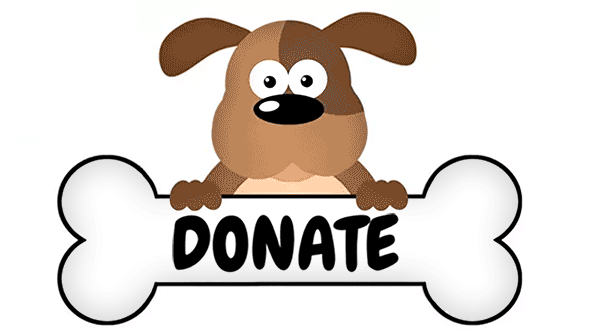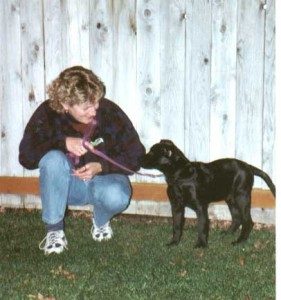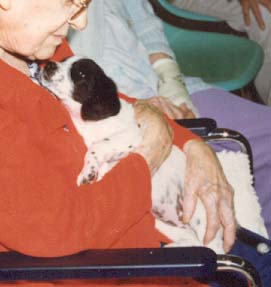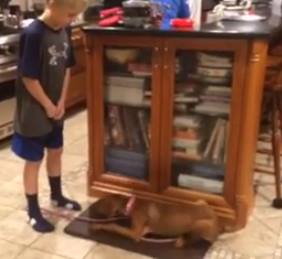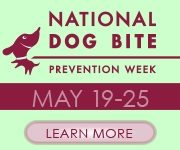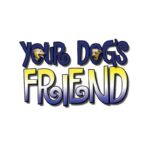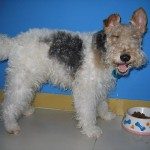Human Space Invaders!
The article below is from Diamonds in the Ruff (www.diamondsintheruff.com), a website with terrific articles and tip sheets on all sorts of behavior issues.
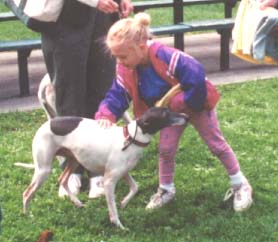 Looming, leaning, reaching, showing teeth and staring – that’s how most humans greet dogs.
Looming, leaning, reaching, showing teeth and staring – that’s how most humans greet dogs.
The dog at left is showing his discomfort at this child’s greeting by lowering his head, flattening his ears, licking his lips,squinting his eyes, tucking his tail and lifting a paw. These are appeasement signals, not aggressive signals, but he is clearly saying to the child, “I’m really not enjoying this.”
Too much, too fast, too close.
If the same child had turned sideways, squatted to the dog’s level and invited the dog into her own space, the dog’s response to the child would have probably been quite different.
Humans show their teeth when they are friendly! We lean forward and make direct eye contact which in dog language is a challenge. We kiss dogs on the face. How strange they must think we are!
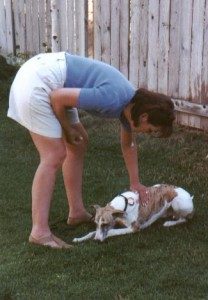 Leaning over and looming is a threatening posture – even if you don’t mean it to be.
Leaning over and looming is a threatening posture – even if you don’t mean it to be.
It causes the dog some distress which results in displays of calming signalsto diffuse your perceived aggression. Lowered head and ears, lip licking, averted squinting eyes. In dog-to-dog body language, standing over and putting paws on shoulders is a very assertive, space invasive challenge. A dog might show appeasement or a frightened or defensive dog might respond by freezing, growling, lunging, snapping or biting.
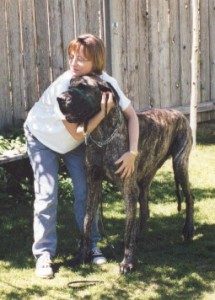 In general, most dogs don’t like hugs.
In general, most dogs don’t like hugs.
They can learn to tolerate them and even welcome them from people they know and trust – and many dogs learn to enjoy it so much they may elicit hugs from their owners. But this doesn’t mean they will welcome the same from all family members and certainly not from total strangers – any more than you would want a stranger in an elevator to crowd you into a corner and get in your face.
Wrapping your arms around a dog’s neck is dangerous, not only because it is usually viewed as an unwelcome and threatening behavior when it comes from a stranger, but because it puts your face right near the dog’s pointy teeth! Another common and dangerous behavior of children: laying on a dog, gives the dog no avenue for escape – she’s trapped by the scary thing.
“My daughter was just trying to hug the dog and it BIT her! It was totally unprovoked!” Perhaps from the child’s point of view, but certainly not the dog’s!
It’s actually a tribute to dogs that they humor us and our erratic children-and that more of them don’t use their teeth to ward away our rude human advances.
Parents should instill a “no hugging any dog” rule for their children. If you make sure the children respect all dogs’ personal space, including their own family pet’s, they will be less likely to be bitten as the dogs they interact with won’t have to correct them.
For some reason we humans have a hard time remembering that even we have rules of intimacy, whom we allow to invade our personal space and when and how. We might slap someone for being too friendly. Why is it so difficult to imagine that our dogs would feel the same?
Most bites to children occur on the face, not because dogs fly off the ground and attack kid faces, but because kid faces are attached to hug monsters.
 Ouch!
Ouch!
This is what can happen when a dog’s subtle warnings go unheeded.
This is how a dog prefers to be greeted:
Turned sideways, body language soft and relaxed, shoulders and head slightly lowered, weight shifted away, not towards, with soft squinty eye contact. Everything is inviting and non-threatening. Once a comfortable and trusting relationship has been built, a dog may love a hug!
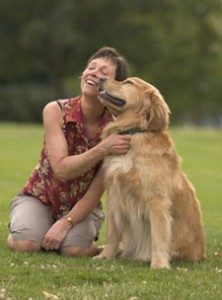 Soft squinty eye contact, leaning away, scratching his chest, not reaching over his head. Notice the dog is returning the squinty eyes and soft facial expression.
Soft squinty eye contact, leaning away, scratching his chest, not reaching over his head. Notice the dog is returning the squinty eyes and soft facial expression.
Cheek to Cheek!
